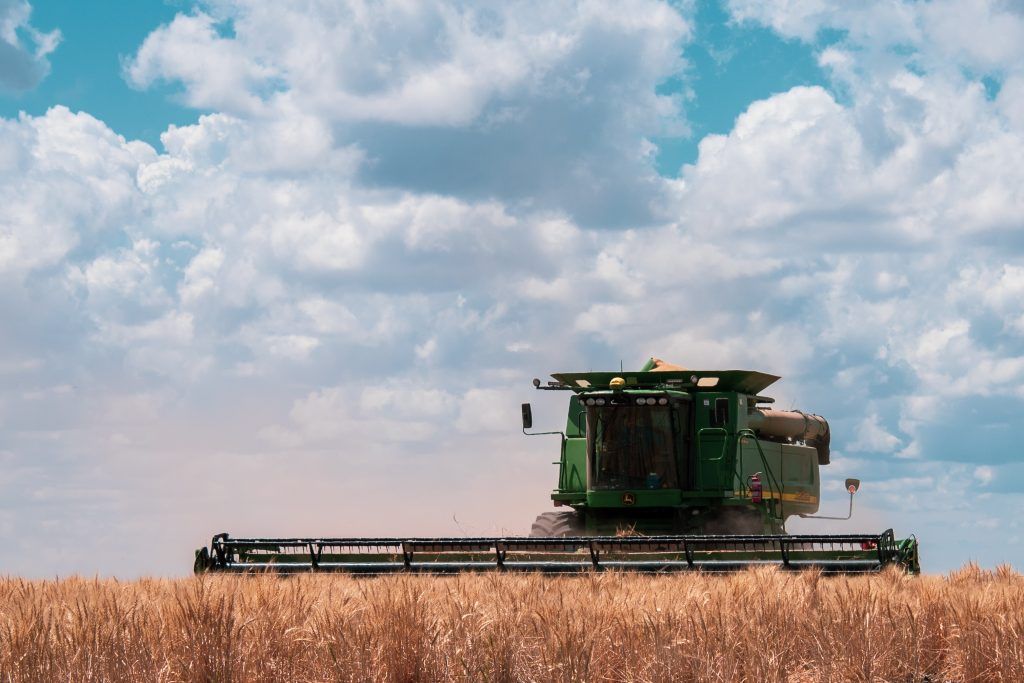Can you really cover the history of cultivated wheat, and thus the birth of civilisation, in 600 words? Absolutely not. Am I going to try? Absolutely.
To start off – I’d like to establish that I really love the term ‘domestication’ when talking about crops. It invokes this image of a brave prehistoric person, using a spear and lasso to tame a giant, vicious plant monster whilst it roams around destroying mud brick huts and stealing livestock.
Historians agree that in about 9700 B.C, people living in the Fertile Crescent* started to harvest wild wheat. Several stone tools used for grinding have been found in dig sites in this area that indicate people were making and baking with flour. This blows my mind. I have, since I was a small child, wondered who that first person was. Who was walking about one day and thought “hey, I reckon if we grind up these little seeds and mix some water in and let it get a bit mouldy and then throw it next to a fire we could really be onto something”. My mum, ever the pragmatist, thinks they would have been inspired by seeing a bird eat the seeds… but who thought of mixing with water? Who thought of leaving it overnight to rise? Who is this prehistorical Maggie Beer and who will invent the time machine that I need to go and thank them?!
Throughout all modern civilisations and time periods (especially during the hard times) wheat flour has been considered an unmatched staple food product. Queen Victoria, semi-concerned with child mortality, oversaw the improvement of flour and bread during her reign… by dictating that the factories need stop including fun things like chalk and boric acid to their dough.
During WW2, flour and bread was considered so incredibly essential it wasn’t actually rationed. The misconception that it was came from the fact it had to be rationed two years after D-Day, because a depressing combination of continuous rain and a lack of able bodied men left the UK without a harvest.
We’re seeing it now – the joke across the internet about how people are now baking loaf upon loaf of bread. Call me a sook, but I think with the world locked down and people battling boredom, fear and uncertainty, people are seeking out the familiar and the safe. We’re self-soothing by revisiting what we know and trust. Is there anything more warming and heartier than a really good slice of homemade bread made with nannas recipe? The BBC reported in April that domestic UK production of flour has dramatically increased following a 92% increase in grocery sales of flour. One mill in in Oxfordshire is running its operations 24hours a day, for the first time in its 125-year history.
Beyond bread, wheat flour has gifted us with an endless list of culinary delights. My personal favourite, dumplings, are a celebration of gluten and some version can be found in every single grandmother’s cook book around the world. A Swedish kroppkaka, a Polish pierogi, a Chinese xiao long bao, a Brazilian coxhina, a Japanese gyoza or a fluffy Jewish matzo ball. There is an often revisited and usually heated debate in my share house as to whether an Italian ravioli counts. All made with wheat flour and all served with love.
Uses for flour are seemingly endless - pasta, noodles, biscuits, tortillas, scones, cake. Seitan is a vegan meat alternative - flour is kneaded with water, then the dough is washed away leaving behind a sliceable loaf of gluten… yum, I guess?
Flour has been around since humans have been living in permanent housing. It’s been the reason people travelled across continents and the reason people built nationwide railways. Wheat flour isn’t going anywhere soon and its only a matter of time before the food scientists and researchers of the world come up with even more exciting and delicious uses. And that, my fellow grain enthusiast friends, is something I look forward to.
*The Fertile Crescent refers to a boomerang shaped piece of land that stretches from the Gulf of Persia to southern Egypt (including parts of Syria, Jordan, Iran, Iraq, Lebanon, Palestine, Israel and Cyprus) This area featured unusually fertile soil and freshwater sources. This is widely assumed to be the place where civilisation began, communities using the natural land to begin cultivation and domesticating animals rather than hunting and gathering in established nomadic tribes.
Words by Bridget Masters, Coordinator, Leadership and Events at GrainGrowers
